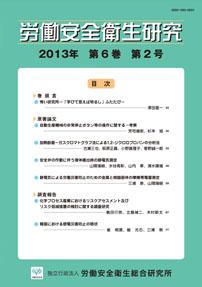Volume 6, Issue 2
Displaying 1-9 of 9 articles from this issue
- |<
- <
- 1
- >
- >|
-
2013Volume 6Issue 2 Pages 33-34
Published: 2013
Released on J-STAGE: December 05, 2013
Download PDF (169K)
-
2013Volume 6Issue 2 Pages 35-41
Published: 2013
Released on J-STAGE: December 05, 2013
Download PDF (281K) -
2013Volume 6Issue 2 Pages 43-48
Published: 2013
Released on J-STAGE: December 05, 2013
Download PDF (290K) -
2013Volume 6Issue 2 Pages 49-57
Published: 2013
Released on J-STAGE: December 05, 2013
Download PDF (2091K) -
2013Volume 6Issue 2 Pages 59-66
Published: 2013
Released on J-STAGE: December 05, 2013
Download PDF (1109K)
-
2013Volume 6Issue 2 Pages 67-75
Published: 2013
Released on J-STAGE: December 05, 2013
Download PDF (467K) -
2013Volume 6Issue 2 Pages 77-81
Published: 2013
Released on J-STAGE: December 05, 2013
Download PDF (315K) -
2013Volume 6Issue 2 Pages 85
Published: 2013
Released on J-STAGE: December 05, 2013
Download PDF (333K) -
2013Volume 6Issue 2 Pages 86-87
Published: 2013
Released on J-STAGE: December 05, 2013
Download PDF (428K)
- |<
- <
- 1
- >
- >|
